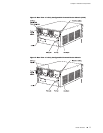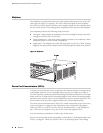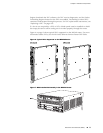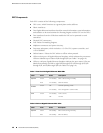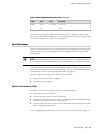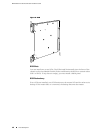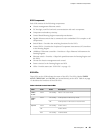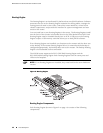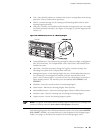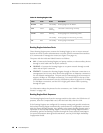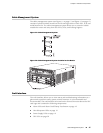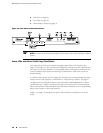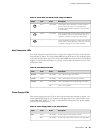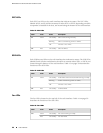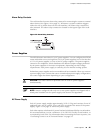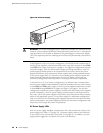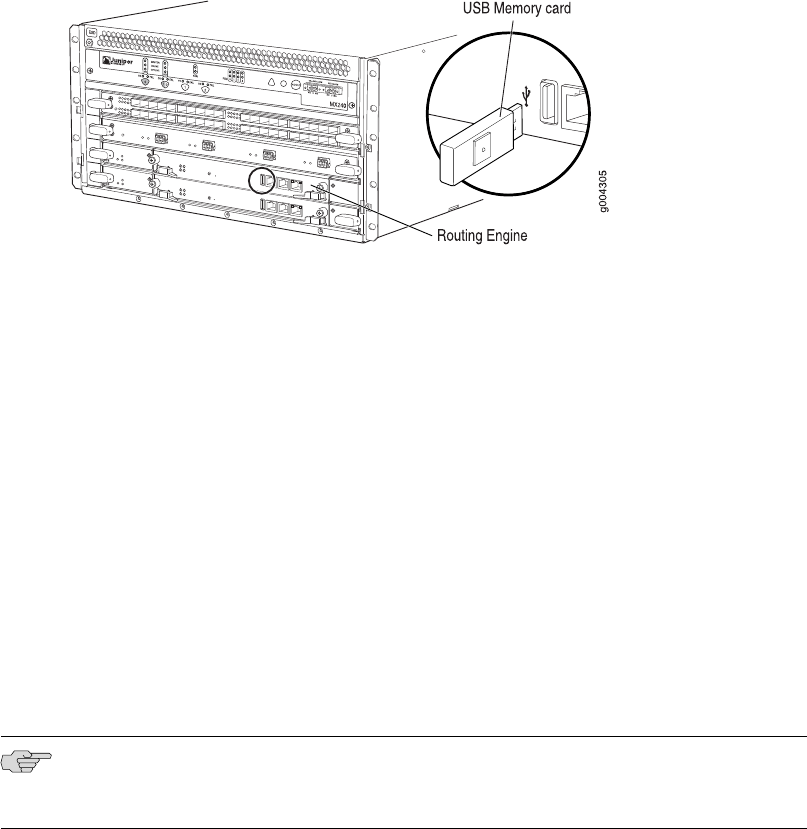
■ CPU—Runs JUNOS software to maintain the router's routing tables and routing
protocols. It has a Pentium-class processor.
■ DRAM—Provides storage for the routing and forwarding tables and for other
Routing Engine processes.
■ USB port—Provides a removable media interface through which you can install
the JUNOS software manually. (See Figure 10 on page 15.) JUNOS supports USB
version 1.0.
Figure 10: USB Memory Device in a Routing Engine
■ CompactFlash card—Provides primary storage for software images, configuration
files, and microcode. The CompactFlash card is fixed and is inaccessible from
outside the router.
■ Hard disk—Provides secondary storage for log files, memory dumps, and
rebooting the system if the CompactFlash card fails.
■ Management ports—Each Routing Engine has one 10/100-Mbps Ethernet port
for connecting to a management network, and two asynchronous serial
ports—one for connecting to a console and one for connecting to a modem or
other auxiliary device. The interface ports are labelled AUX, CONSOLE, and
ETHERNET.
■ EEPROM—Stores the serial number of the Routing Engine.
■ Reset button—Reboots the Routing Engine when pressed.
■ Online/Offline button—Takes the Routing Engine online or offline when pressed.
■ Extractor clips—Used for inserting and extracting the Routing Engine.
■ Captive screws—Secure the Routing Engine in place.
NOTE: For specific information about Routing Engine components (for example, the
amount of DRAM), issue the show chassis routing-engine command.
Each Routing Engine has four LEDs that indicate its status. The LEDs, labeled MASTER,
HDD, ONLINE, and FAIL, are located directly on the faceplate of the Routing Engine.
Table 10 on page 16 describes the functions of the Routing Engine LEDs.
Host Subsystem ■ 15
Chapter 2: Hardware Components



